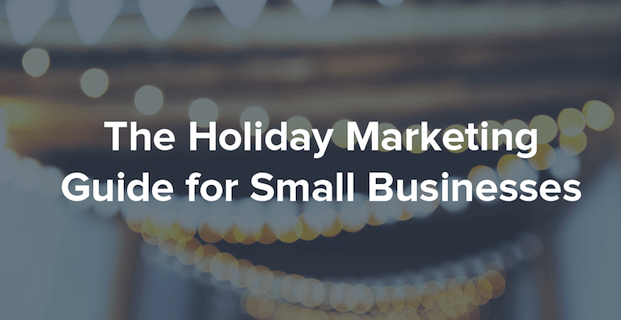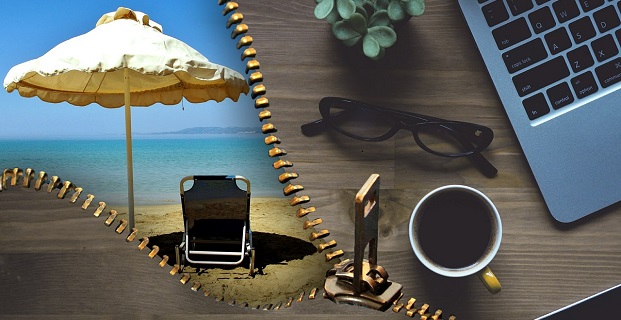by Mark Bloom | Mar 7, 2017 | Small Business Advice
Is It Valuable or Just Email Inbox Filler?

According to numerous experts, including Entrepreneur.com, email marketing is still an effective means of promoting your business and generating sales. This seems to be true despite anecdotal evidence suggesting that most people receive more than 100 email messages a day. Before you click that Send button, consider your own email habits.
Your email inbox is like your family. You think everyone treats it the same… until you learn otherwise. Some people keep their inboxes sparkling clean by dealing with each piece of email as it comes in, whether it’s important or just email inbox filler. These people are probably OCD. Other people fail so miserably that it feels like a victory whenever they get their inbox down to fewer than 20 waiting emails.
Things That Clog Up Your Inbox
Your email inbox isn’t just where SPAM goes to die; it’s also where all your notifications, newsletters and sales pitches end up. It’s strange that someone you don’t know would send you an email to sell you something you don’t want or need, but that’s just one type of email inbox filler. And they’re the emails that are easy to delete. Click… and gone.
But the notifications and newsletters — ostensibly things you’ve voluntarily signed up for — are a different matter. You want to read them, but you can’t find the time. So they just sit there: email inbox filler that takes up space and makes you feel guilty about not participating in the modern world. Eventually, they last long enough to lose their relevancy or you get tired of opening and closing them, like you sometimes do with the refrigerator door when you’re vaguely hungry. Then, click, and it’s gone.
Don’t Send Email Inbox Filler
Whenever you send email, whether it’s to one person or 100 people, bear in mind that your recipients don’t receive your message in a vacuum. It becomes part of the deluge to their email inbox every day. No matter how much time and effort you spent crafting your message, it might end up in the Trash.
To overcome that tendency, you can’t use email to sell your products or services to unaware recipients. If you try: click, and it’s gone. Instead, offer something of value:
- A free ebook that suits their interests
- Free entertainment, such as a link to a movie
- Free insight into your business that they can put to use immediately
- Free ways to save money on something they want
- A free lunch — although everyone will tell you there’s no such thing

Consider Your Audience… First and Foremost
It’s easy to compose an email to sell your products or services. After all, you know the benefits better than anyone. But unless you can give a valid reason and a sense of urgency, no one will even open your email. Unless you can show clear benefits, no one will follow the link to your website. Unless your recipients are in the frame of mind to buy — and buy now — you won’t make a single sale.
Ray Access sends out a newsletter once a month. You can sign up on our website. We try our best to provide value to all our friends, colleagues and customers. If we give you something you can use, our newsletter has done its job. We don’t expect you to race to our website to hire us. But we do hope that when you’re in the market for writing services, you’ll remember us. That’s the only job of a newsletter.
And that’s worth the risk of sending something you may consider email inbox filler, even just once in a while. We strive to improve with every single issue — to give you something of value. And that includes advice like this.
Ray Access is a content marketing firm that delivers targeted words to empower your business. Contact us about your specific project to receive a quote or discuss your needs. We write website copy, blog posts, e-newsletters and more. Everything we do is thoroughly researched, professionally edited and guaranteed original.
by Guest Blogger | Dec 13, 2016 | Small Business Advice
Small Businesses Need Help This Time of Year
The holidays are fast approaching. Are you ready? If you’re not, it’s time to get started. Shoppers are most active during holidays and eagerly looking for the best propositions every year. And small businesses that are ready for it will win out over the stragglers.

Besides getting an early start, here are some other ways to make sure this is a successful holiday season for your small business:
Optimize Your Mobile Site
Mobile holiday shopping increased by about 60 percent in 2015 vs. 2014. Marketers are arming themselves with mobile strategies and there’s no reason why small businesses shouldn’t be on board. Here are some important factors in mobile optimization:
- Loading time. People have less patience on mobile than they have on desktop, and that’s already not very much. 50 percent of smart phone users expect a page to load in 2 seconds or less. Make sure your photos and images are light enough for fast mobile-loading so you don’t risk shoppers skipping over your slow site for a faster one.
- Make sure your checkout process is geared for mobile. Enable autofill, use drop-down menus and ask only for the most essential information. Mobile shoppers are prone to interruptions from the very devices they’re using to shop, so the more seamless you make your mobile checkout, the lower your cart abandonment rate.
Prepare Early
Online shopping means that customers don’t have to wait until businesses pull out their Christmas merchandise. Holiday shopping is starting earlier and earlier with some retailers courting shoppers as soon as August. But don’t blame the stores.
In 2015, 56.6 percent of shoppers already started making purchases by the beginning of November, a 2.2 percent increase from 2014 and a whopping 17.6 percent increase from 2008. Though peak times are still Black Friday through Christmas, businesses that are holiday-ready early can increase their overall sales.

Use Texting and Social Media for Customer Service
Many small businesses do customer service the old fashioned way. That’s fine, except while you’re dusting off your landline to call a customer, they’ve moved on to higher technological ground. By using SMS for time-sensitive customer inquiries and making it easy for customers to reach you on social media, you offer customers more convenience and better service.
When clients hit pre-holiday madness, good customer service becomes even more essential. Consider these stats:
- 72 percent of Americans own a smartphone.
- 77 percent of consumers who text aged 18–34 are more likely to have a positive perception of a company that offers text capability.
- 91 percent of retail brands use two or more social media channels.
- Failure to respond via social channels can lead to a 15 percent increase in churn rate.
- 33 percent of customers prefer to contact brands using social media rather than the telephone.
Promote Your Brand with Social Media
Engaging customers on social media is essential to marketers for businesses large and small. Facebook, Instagram, Twitter and Snapchat can help you advertise your holiday wares:
Photos are great; videos are better. Even with a small marketing budget, you can do DIY video to spruce up your social media pages. Two hot video trends right now are vertical videos and videos with subtitles, so people can watch them without volume — when they’re at work, late at night, or in a loud place.
Run contests. Contests are a fun way to get shoppers to interact with your brand. Some ideas include:
- Ask customers to share photos. Whether it’s a holiday-themed photo or a photo that’s related to your brand, this type of contest increases customer engagement.
- An essay/recipe contest. Get people to share essays on their best holiday recipes. The apparel company Hero Box increased their email address list by 1,443 clients by running an essay contest on social media.
- Give away discounts and merchandise. People love free stuff — and if all it takes is signing up to your page, sharing or tweeting, then it’s easy for customers to participate.
- Referral rewards. This is a great way to increase your customer database. Offer rewards, discounts or merchandise to customers who refer friends to your business.
Be Yourself
Small businesses don’t have the over-the-top marketing budgets that big businesses do. In a way, this gives them an edge during the holiday season when people are looking for something special for their loved ones and not something generic. Advertise your business’s originality, especially if you offer unique products that customers will be hard-pressed to find in other places.
Help your customers out by creating gift guides and making suggestions on who would like different products and wares. The homey, family-oriented climate of the holidays works in favor of small businesses, so providing personalized customer service and connecting with your community are great ways to market yourself during the holidays.
Small businesses can do well this holiday season by preparing early, optimizing their mobile sites, making good use of social media and text for advertising and customer service, and playing up the uniqueness of their products for holiday shoppers.
Ray Access is a content marketing firm that delivers targeted words to empower your business. Contact us about your specific project to receive a quote or discuss your needs. We write website copy, blog posts, e-newsletters and more. Everything we do is thoroughly researched, professionally edited and guaranteed original.
by Elle Ray | Nov 29, 2016 | Small Business Advice
It’s Not Optional for Small Business Owners
Now that Thanksgiving has passed, it’s time to gear up for the rest of the year-end holidays. The December calendar fills up quickly with parties, family gatherings, shopping trips and charity drives. The kids will be home, your home will be chaotic and your friends who work for someone else will be planning holiday trips to warmer temperatures.
But if you’re like most small business owners, you not only make the bacon, you also wrap it up, sell it, cook it and clean up afterwards. It goes without saying that you’ll be working through the holidays.

Making Choices
This is a great time of year for reflection. And one consideration that’s tantamount if you’re going to get through another year working through the holidays is to remember that you chose this life. If you wanted to clock out at five, take three- and four-day weekends on a regular basis and get paid while on your holiday cruise, then you would’ve stayed working for someone else who maybe gave you those perks.
But you didn’t. You chose to be the boss. When life gets difficult and you’re tired, remember who’s in charge. Whenever you’d rather not be working through the holidays and you think “everyone else” is having fun, that’s when it’s time to remember that this is your choice. (And believe that you’re not alone; “everyone else” isn’t exactly gallivanting from party to party.)
It’s All About Attitude
In addition to taking responsibility for the predicament you find yourself in this December, a different perspective can help you get your fill of ho-ho, merry-merry, happy-happy wishes. Consider:
- You must be doing pretty well if you have so much work that you have to keep working through the holidays.
- The parties and the celebrating you do in the future are going to be just that much sweeter because you made a success of your business.
- You’re the type of person who understands that sacrifice is required for success.
- Others can have the madness, the traffic and the drunkards this year; you get a pass.
- You’ll stay positive and pay it forward to everyone you meet this month, because you’re a successful business owner with an attitude of gratitude for your work, your talents, your clients, your staff and your source.
And little tricks don’t hurt either. After all, even the most positive, enlightened among us has a bad day once in a while. Even the most successful go-to guru has a bout of the poor-me’s occasionally. To help you get through the downsides of working through the holidays, here are a few tangible tips:
- Focus on what’s in front of you. If you’re stuck in front of your computer writing or managing spreadsheets, get through each day by maintaining your focus on the task at hand. If you’re glad-handing new clients, don’t think about tomorrow or next week and what others may be doing. Stay committed to your business.
- Stay hydrated, take time to exercise and eat well. When you’re physically run down, it’s even more difficult to maintain a positive attitude, especially when self-pity knocks.
- Prepare for the busy end-of-year obligations that every small business owner faces and get some of it out of the way early whenever you can so that you might have time for a cup of cocoa near the fire and maybe a few hours to open gifts with the family.
- Take little mini-breaks to call your adult kids or your parents. Pack a lunch with Christmas cookies and turkey sandwiches. Drink hot cider or cocoa to bring the season’s treats to you.
- Make plans for a big holiday trip next year. Or plan to take off during a slow time for your business, perhaps in the summer or during the bleak days of February. Give yourself something short-term to look forward to that will propel you through any misgivings you have about working through the holidays.
Happy Holidays from your friends at Ray Access!
Ray Access is a content marketing firm that delivers targeted words to empower your business. Contact us about your specific project to receive a quote or discuss your needs. We write website copy, blog posts, e-newsletters and more. Everything we do is thoroughly researched, professionally edited and guaranteed original.
by Mark Bloom | Oct 17, 2016 | Office
Your Electronic Screens Can Hurt Your Vision

The good news is that computers, televisions and other electronic devices aren’t as bad for your eyes as they once were. That’s because cathode ray tubes emitted a low level of X-ray radiation while the new LCD screens give off none. So there used to be an element of truth behind the admonition: “Don’t sit too close to the TV or you’ll go blind!”
A cathode ray tube once provided the only type of screen you could watch outside of a movie theater. Electronic devices today are much more sophisticated… and eye-friendly. But that doesn’t mean constantly checking your cellphone or spending hours in front of a computer screen is good for your eyes.
The Real Threat to Eyesight
Today, people are spending more and more time using technology. In fact, one report found that Americans spend 11 of 18 waking hours a day with some kind of electronic device, including television (as of 2014, see the chart below). To protect your eyes from the computer and other devices, you have to guard against eyestrain.
Find more statistics at Statista
Too much uninterrupted screen time can actually cause a condition called computer vision syndrome or digital eye strain. The symptoms of this medically recognized condition include:
- Headache
- Tired eyes
- Blurry vision
- Light sensitivity
- Neck pain
- Dry eyes
- Contact lens irritation
- Inability to focus
Working on a computer, reading on a tablet and messaging on a smart phone all take their toll on your eyes. It’s not the same as reading a book because electronic screens emit light. Long term, continued and unprotected screen time, especially up close, can lead to age-related macular degeneration, a condition that can cause blindness if left untreated.
How to Protect Your Eyes from the Computer
The principals of Ray Access are certainly no Luddites when it comes to technology, but it still makes sense to protect your eyes from the computer. Fortunately, there are several products and techniques to help you do exactly that. Follow these tips:
- Think ergonomically. If you spend a lot of time in front of a computer screen, set it up so that the top of the screen is even with your eye level. You should never sit so that you’re looking up at the screen. Also, your computer screen should be two to three feet from your eyes.
- Set the lighting. Make sure there’s no glare being reflected on your screen. Glare adds to eyestrain. Eliminate fluorescent lighting if possible and keep the light level slightly below the light level of your screen, whether it’s a computer, tablet or cellphone.
- Consider filters. Either a specific blue light filter or special computer eyeglasses can protect your eyes from the computer. If you suffer from eyestrain, consider this an investment in the health of your eyes.
- Limit your time in front of a screen. The 20-20-20 rule applies here. The idea is that every 20 minutes, focus your eyes away from the screen for 20 seconds at an object that’s about 20 feet away. Even 20 seconds gives your eyes a needed break.
- Get proper eye care. If you look at electronic screens all the time, make sure you schedule regular vision tests with your optometrist or ophthalmologist.
And that’s how you can protect your eyes from the computer, tablet, phone and any other electronic device. It’s the best way to keep your eyes healthy.
Ray Access is a content marketing firm that delivers targeted words to empower your business. Contact us about your specific project to receive a quote or discuss your needs. We write website copy, blog posts, e-newsletters and more. Everything we do is thoroughly researched, professionally edited and guaranteed original.
by Elle Ray | Sep 11, 2016 | Small Business Advice
Sales Techniques Every Small Business Needs
So you’ve finally taken the leap and stepped out on your own. You’re great at building engaging websites, creating stunning graphics, building beautiful surfboards, writing, sewing, fixing… you fill in the blank. But are you good at sales?

You’re following your bliss and that dream state certainly doesn’t include knocking on doors and asking for business. If you’re like most small business owners, you probably didn’t give much thought to learning:
- Where to find new clients
- The best opening
- How to read a customer
- How to approach corporate clients
- How to overcome objections
- The art of the close
- And most basic of all: How to sell successfully
No Way Around It
Maybe you think of used cars or insurance when you think of sales techniques, something distasteful that’s definitely not cool or anywhere on your radar. But unless you have a product that is so hot that everyone is scrambling to find out where they can get it, you’re going to have to tackle the sales issue. There’s no way around it if you want to stay in business.
Even with the next greatest idea, if no one is selling it, your business is going nowhere. And as the maxim states: a business that’s not moving forward is actually moving backward. Ideally, you can hire an outstanding salesperson who can persuade customers to buy what you’re selling.
But for most small start-ups and one- or two-man shows, you are it. You’re the floor sweeper, receptionist, marketing pro, web writer, bookkeeper, salesperson and, oh yeah: the main person who does the service or creates the product.

Sales Techniques for Dummies
After taking a few sales tips from those in the know, we’ve plucked the best to share with you. So here are a few sales techniques to master. If you’re really passionate about your service or product and want to spread the word, you’ll enjoy learning these techniques to sell more.
- Ask for Referrals
This is by far one of the least intrusive and most underused of all the sales techniques you can learn. A referral is better than any advertising, public relations or marketing you could imagine. When someone loves your work, ask for a referral. Just come out and say, “Do you know anyone else who would like our product/service?” What’s the worst thing that could happen? They could say, No.
- Identify a Need
Remember that sales techniques are not about you. You may feel passionate about the service or product that you can deliver. You may get all pumped up when talking about it. But while your enthusiasm may be entertaining (even contagious), your listeners — potential clients and referrals — can’t get worked up about it unless you first illustrate what’s in it for them. Answer the question about why should they care even before you start thinking about what you can deliver.
- Find Out What Makes Your Customers Tick
After you learn to get out of the way of the sales process, the next thing to do is find out what hot button gets your prospects revved up so they want to know more. Is it saving time, making more money, finding good employees, seeing pretty colors or being environmental consciousness? Everyone has a button and once you find it, you’ve got to be brave and push it. This sales technique only works if you are prepared to ask questions and then listen closely for the trigger that needs pushing.
- Call on Real Prospects
Whether you’re trying to sell your idea to investors, aiming to recruit the best talent or gunning for new clients, you need to spend your time on potential calls with those are ready for your pitch. They must be in a place where they can help you, either by funding you, working for you or buying your product or service. Pick a region or an industry and become an expert. Instead of just flinging spaghetti on the wall to see what sticks, focus your cold calling to make it more like warm calling or even better — hot calling.
Do your research before hitting the proverbial pavement. It takes more than dumb luck and the latest sales techniques to grow your business profitably. It takes:
- Smarts
- A willingness to get rejected
- Consistent persistence
These sales techniques can work for as well for you as it’s worked for Ray Access. We expect nothing in return for sharing this information, but if you found it valuable, consider sharing it. (In other words, refer this article to your friends who might also benefit from it.)
Ray Access is a content marketing firm that delivers targeted words to empower your business. Contact us about your specific project to receive a quote or discuss your needs. We write website copy, blog posts, e-newsletters and more. Everything we do is thoroughly researched, professionally edited and guaranteed original.
by Mark Bloom | Sep 5, 2016 | Small Business Advice
Networking Tips to Get the Most from Meetings

The principals of Ray Access believe in the power of networking. For local marketing, face-to-face networking has provided us with a local web of clients and partners. These connections serve several business purposes. They’ve:
- Created professional relationships that we continually nurture
- Effectively spread word-of-mouth brand awareness for us
- Delivered projects and referrals that directly add to our bottom line
- Provided opportunities for us to give back to the business community
In short, networking is a valuable tool for increasing your local business. At Ray Access, we think so highly of networking that we’ve written about it before:
- How to Work a Networking Room, which discusses how to approach a room full of people
- 10 Tips for More Effective Networking, which provides networking tips to help you make a great first impression
But There’s More to Say
Networking tips don’t end there. While these two articles offer valuable advice for any businessperson, you may want to know more. There’s certainly more questions about networking. For example:
- What about when you finally sidle up to a prospect?
- How can you give that person (or group of people) your undivided attention while making a positive first impression? Sometimes, it’s difficult enough not to say the wrong thing, let alone trying to say the right thing.
- How can you leave a conversation confident that others you’ve met will remember you?
Questions and Answers
It’s a tall order, especially if you’re an introvert given to mumbling in a one-on-one conversation. It’s OK. If you use these networking tips, you can still be yourself and leave a positive first impression. To get to a good place in the conversation, remember three essential networking tips that will serve you well:
- Listen attentively to what others say and be able to comment on it.
- Don’t force your way into a conversation; wait for the pause.
- Focus not on what people can do for you, but how you can help others.
If you can act on these three networking tips, you’ll leave your mark on the person or persons with whom you’ve spoken. Networking at a business event isn’t much different than making the rounds at a party. You want to be entertaining, yet learn a little bit about the people you don’t know. So your approach should be the same: ask interesting questions, let them talk and don’t talk business unless someone else brings it up.

Moving the Conversation Forward
You’ll fail at networking if all you can add to the conversation are generic comments on the weather, the economy or local sports. In fact, whenever we hear someone mention the weather, a bomb goes off in our heads warning us that this conversation is turning tragic. So we work hard to turn it around. If successful, we not only rescue a conversation from oblivion, but we end up building rapport. Other people, consciously or not, understand the conversation-about-weather time bomb.
Granted, we’re writers, so we know a little bit about a lot of different topics. We can draw on the research we’ve done in many medical disciplines, hiring practices, real estate, marketing, education, website development, or even disaster recovery and plumbing, just to name several. Our clientele take us all over the map in terms of subject matter, and we’re always eager to learn something new.
But you too can do what we do with a little practice. It’s a matter of listening attentively and thinking of something valuable to add to the conversation. For example — and this is an easy example — if someone comments on the weather (especially after an uncomfortable pause), turn the conversation back on that person. Ask him if the current weather pattern reminds him of his hometown or if it’s any different from where he grew up. That question can spur a whole new conversation.
Asking Good Questions
Staying with the topic of the weather, there are other questions that can reinvigorate a conversation. In the meantime, the answers tell you something new about the person you’re talking to. Everyone has a weather-related story. Ask about it. Ask about the most favorable place, regarding the weather, that the person’s lived. Ask about the favorite season, but probe to get reasons. Never ask a yes-or-no question, or if you do, ask follow-up questions.
 If the subject of work comes up, as it often does in a business networking event, don’t stop at asking what other people do. Ask what brought them to their profession. Ask what they like most (and least) about it. It’s one thing to know what a person does; it’s quite another to know why.
If the subject of work comes up, as it often does in a business networking event, don’t stop at asking what other people do. Ask what brought them to their profession. Ask what they like most (and least) about it. It’s one thing to know what a person does; it’s quite another to know why.
Once you get on the subject of career, it opens a whole window of past experiences that can really shed light on the person’s personality and work history. You’re not being nosy; if someone prefers not to answer, don’t push it. But if they do answer, you’re off and running on a conversation that will help you really connect.
Networking Tips Return to Basics
When you’re out networking for your business, keep in mind your goals:
- To make connections with other local businesspeople
- To make yourself useful by connecting people as needed
- To leave the people you meet with a positive impression
Networking isn’t about handing out business cards to every single person. If you connect with someone regarding your business, then it’s OK to hand over your card, but in general, the best networking tips are about connecting with other people. Hardly anyone gets business directly from a networking event; it comes later, when someone you’ve met needs your product or service — or better, when others refer you to someone who does need what you offer.
So venture forth. These networking tips will guide you as you hop from one conversation to another. Putting these tips into practice will help you reach your networking goals, which will eventually lead to the success of your business.
Ray Access is a content marketing firm that delivers targeted words to empower your business. Contact us about your specific project to receive a quote or discuss your needs. We write website copy, blog posts, e-newsletters and more. Everything we do is thoroughly researched, professionally edited and guaranteed original.











 If the subject of work comes up, as it often does in a business networking event, don’t stop at asking what other people do. Ask what brought them to their profession. Ask what they like most (and least) about it. It’s one thing to know what a person does; it’s quite another to know why.
If the subject of work comes up, as it often does in a business networking event, don’t stop at asking what other people do. Ask what brought them to their profession. Ask what they like most (and least) about it. It’s one thing to know what a person does; it’s quite another to know why.